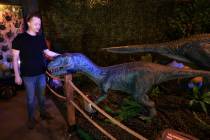Long ago passed by, tiny town of Amboy carries on — PHOTOS

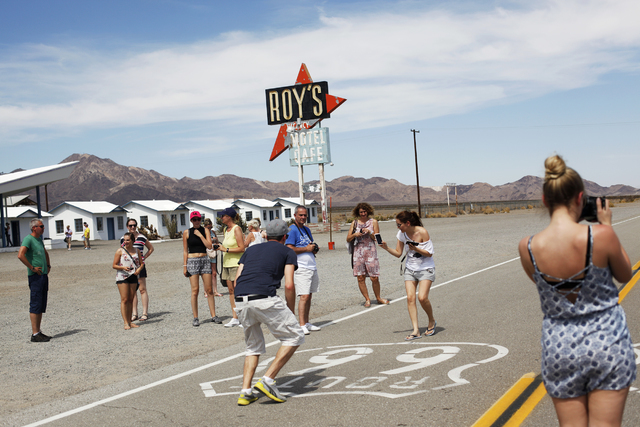
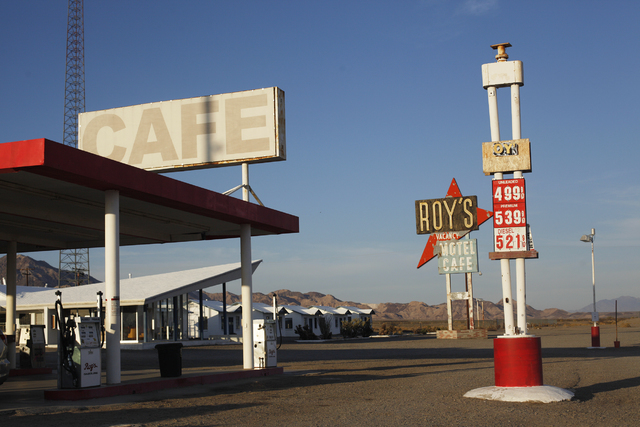
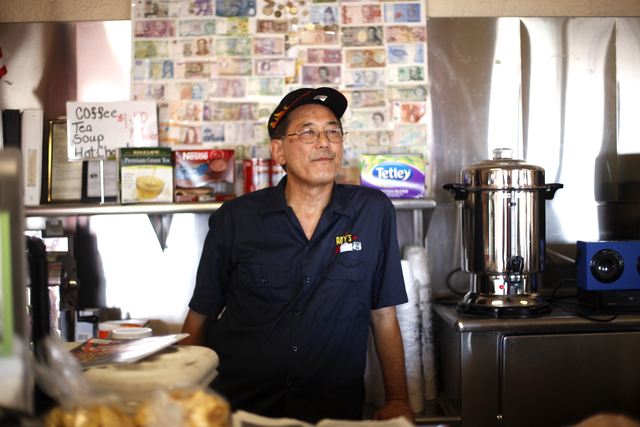
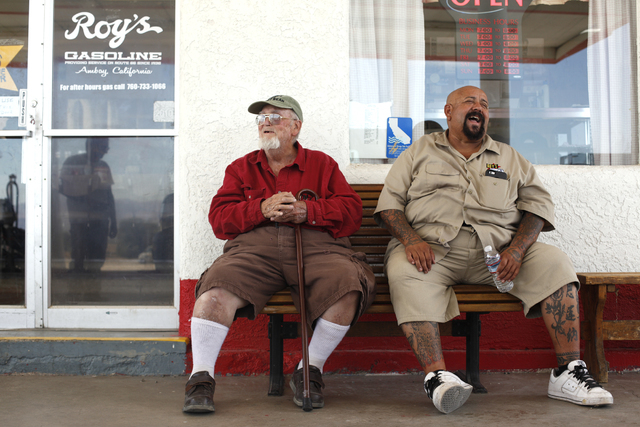

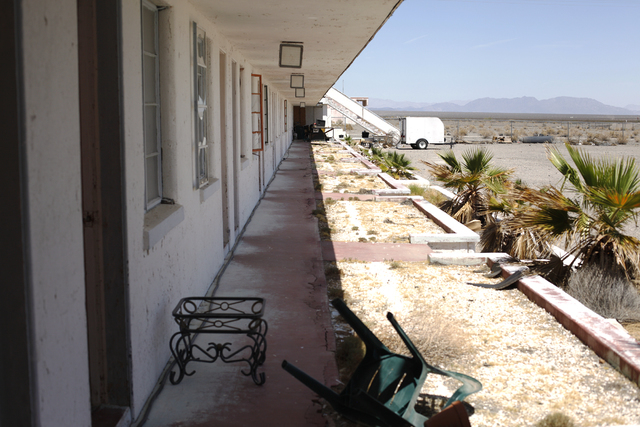
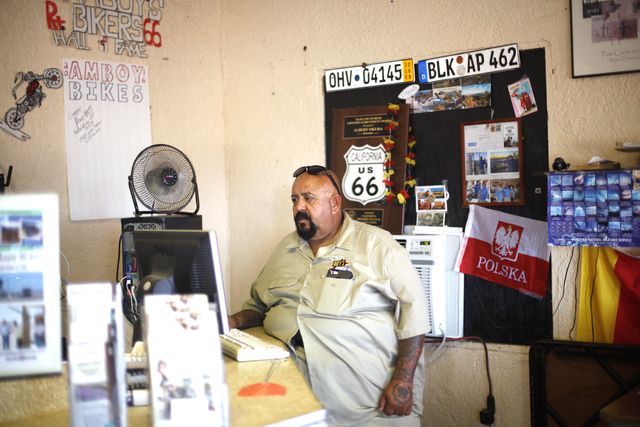
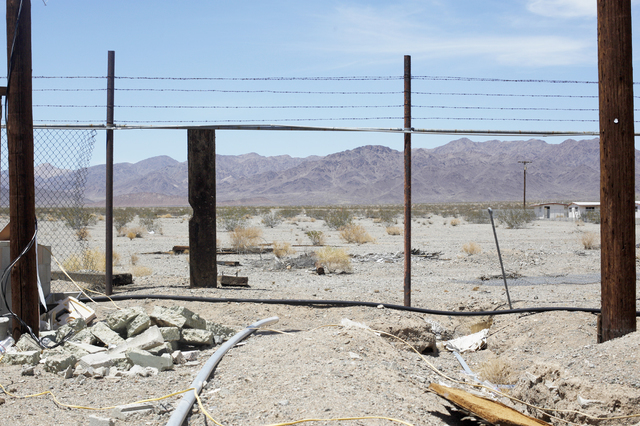

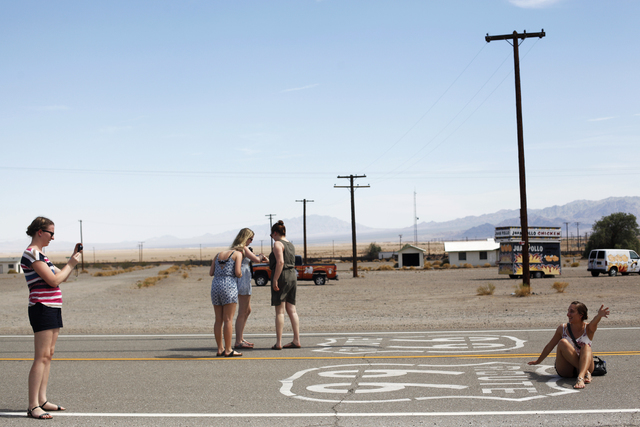
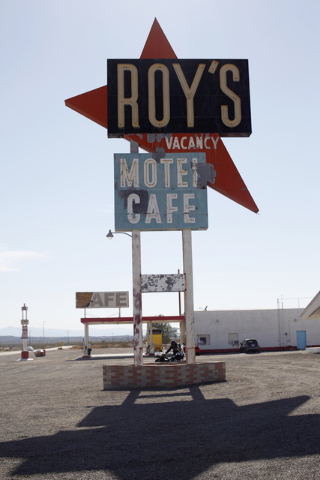
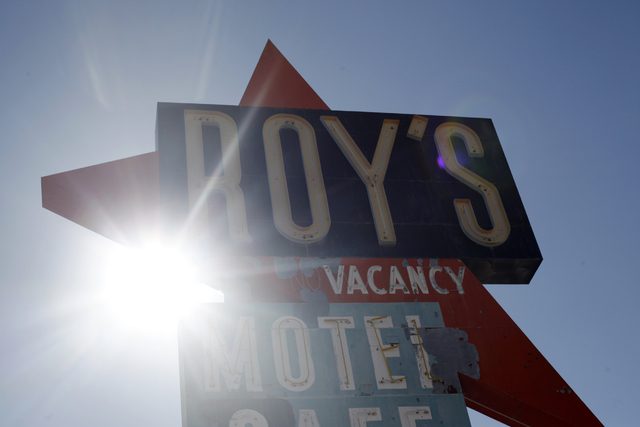
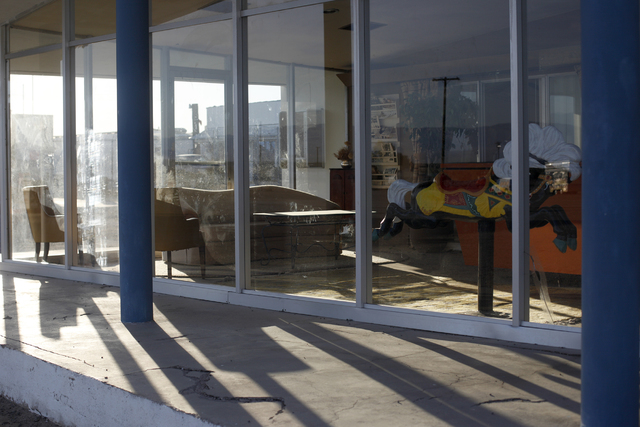
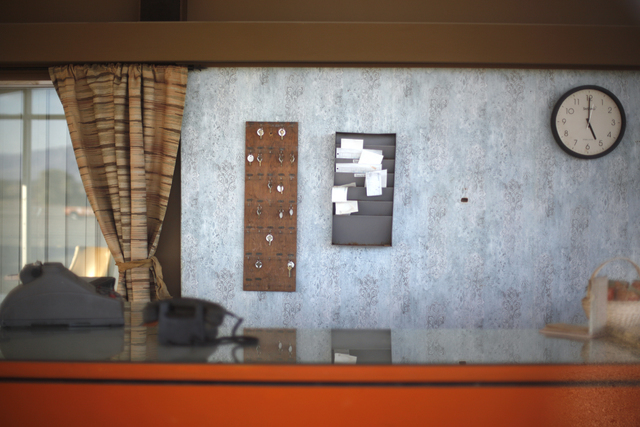
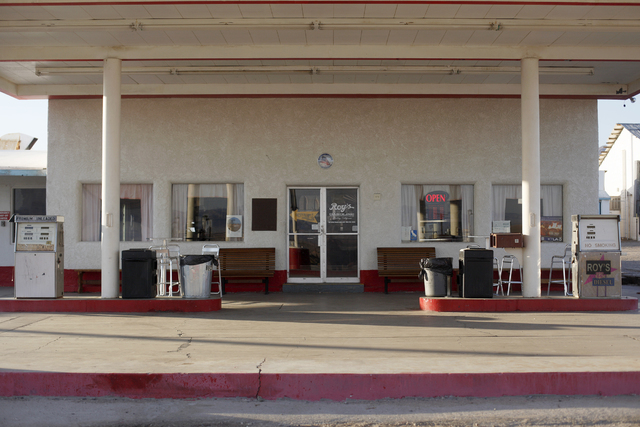
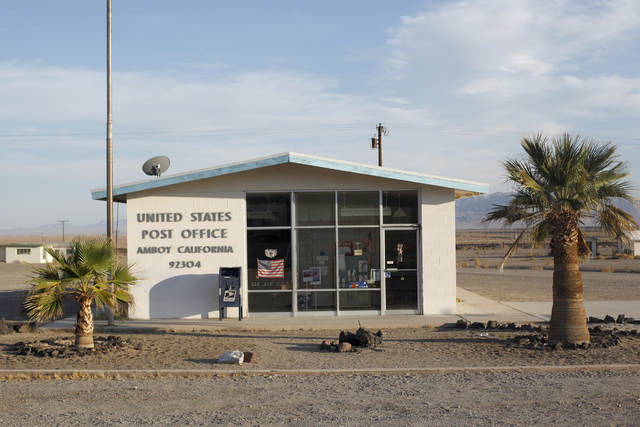
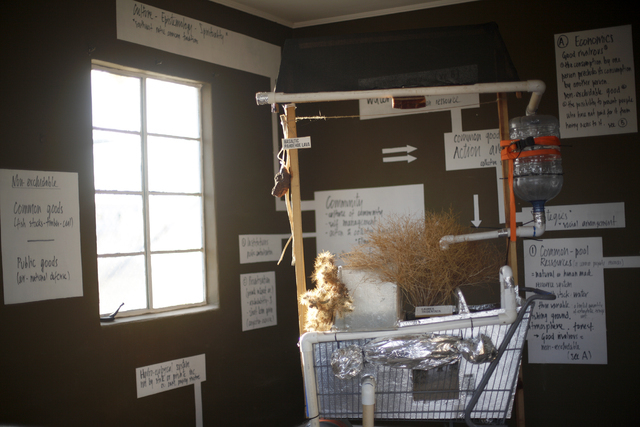
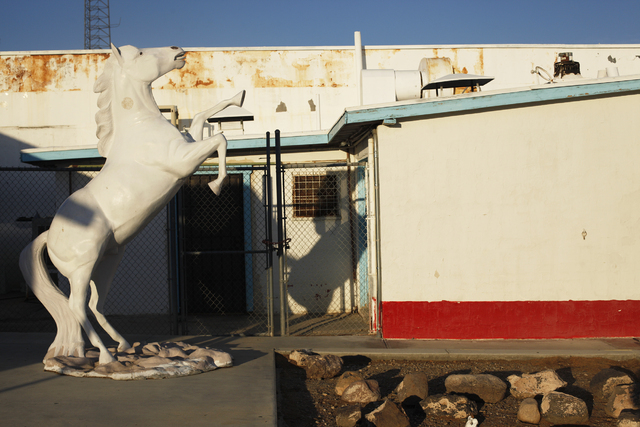

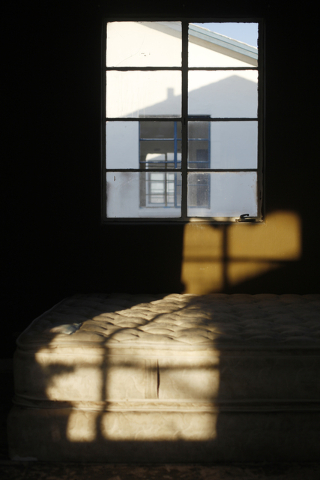
AMBOY, Calif.
Albert Okura is a man who believes in destiny.
The owner of Southern California’s Juan Pollo chicken empire insists that it’s his calling to sell the most plucked-and-roasted birds on the planet. His purchase of the site of the nation’s first McDonald’s restaurant in San Bernardino was also preordained, he says; so was the museum he built there to commemorate the tasty slice of Americana that Ray Kroc founded.
But this far-out spot was perhaps fate’s grandest design: In 2005, Okura paid $425,000 cash for a clutch of orphaned buildings in the middle of the Mojave Desert’s hellish summer inferno, a long-forgotten, gas-and-burger pit stop somewhere out there between Las Vegas and Los Angeles.
The soul of the town is Roy’s Motel and Cafe, its towering Atomic Age road sign a faded beacon along old U.S. Route 66, the so-called Mother Road that paved the way for generations of adventurers to head west and stake their claim on the American Dream.
Says the 64-year-old Okura, who is also a bit of a dreamer: “It was my destiny to buy this town.”
Nowadays, he’s heralded as a sage preservationist who purchased Amboy to promote the old-school aura of this fabled highway corridor and its neon road signs and space-age building shapes known as Googie architecture — the funky, old family-owned dives where travelers ate, slept and gassed up their rides as they got their kicks on Route 66.
Of course, the real story is less romantic — and more complicated.
For one, Okura is a shrewd entrepreneur who knows such oddball investments are free advertising for his chicken empire. But what the one-time kid raised on L.A.’s smog and traffic valued even more was owning a mostly unpeopled town in the middle of nowhere, where vehicles are passing conversation pieces and the nights are pierced by the hiss of the wind and the lonely whistle of lumbering freight trains.
“I didn’t set out to preserve anything,” he said. “It just happened.”
ROAD REVISITED
Okura considers himself a modern incarnation of the colorful characters who once inhabited this legendary roadway now known as the National Trails Highway.
Perhaps without even knowing it, he’s evoking the spirit of Amboy pioneer Herman “Buster” Burris, an irascible World War II aircraft mechanic who built the place with his bare hands decades ago — erecting buildings without permits and lighting them with self-rigged electricity.
Burris was a crusty old desert codger who liked guns and hated hippies and leather-clad bikers, and who’d often scowl at strangers as he peeked under the hoods of their overheated cars, greasy rag tucked in his back pocket.
In the 1970s, when Interstate 40 opened, bypassing his town, Buster bulldozed numerous buildings here rather than pay taxes on them.
The 92-year-old died in 2000, and Okura bought the town in 2005 from Burris’ second wife, Bessie. Crucial to the sale was maintaining the town that Buster built: Okura vowed that he wouldn’t create a tourist trap or gouge the passing souls in need of gas and a snack.
And Okura has kept his word: The shuttered motel remains a snapshot of postwar roadside America. While gas at the vintage 1960s pumps costs $4.99 a gallon — “the lowest price in town,” he jokes — a bottle of water inside the cafe costs just a buck.
While he runs his chicken business back in San Bernardino, Okura keeps a skeleton staff here, caretakers and security men who live in trailers among the sagebrush and often rise like saints in the middle of the night to pump gas for luckless motorists who ring the bell.
Like wayfarers marooned on a desolate shore, they comprise Amboy’s entire population, guarding the welfare of the place known as “the ghost town that ain’t dead yet.”
BOOM TO BUST
During the Great Depression, Amboy was a railroad depot town comprised of a couple of bungalows. Then Route 66 opened the West to America’s fledgling car-motoring culture.
In 1939, Buster helped his father-in-law, Roy Crowl, open a service station to handle the hoards of road warriors and later a diner to feed motorists waiting for crapped-out cars to be fixed. The motel, featuring an auto court of small cabins, came a few decades later.
Buster singlehandedly dragged Amboy into modern times. As the story goes, he brought electricity here by erecting poles and wires along Route 66, using a Studebaker pickup truck.
Soon, the place operated around the clock, and Buster placed ads in newspapers nationwide to recruit help. By 1960, Roy’s had 70 employees. Amboy throbbed with 700 residents.
Buster protected his town like a junkyard dog. He distrusted “men with long hair and rowdy bikers” and chased off many “unacceptable patrons” at gunpoint.
Then in 1972, the opening of Interstate 40 wrecked the desert oasis, bypassing the town, causing businesses to flee in panic. Buster lamented that business “went down to zero” the day the interstate opened. All that remained were the Roy’s complex, a post office and an industrial complex; Buster soon tore the rest down.
After Buster’s death, a New York photographer bought Amboy as a weathered filming location. In 2003, the town was put up for sale on eBay.
That’s when a visiting Okura fell in love with Roy’s rugged isolation; this small business holding its own along a storied road that had died long ago. “It was an oasis in the middle of nothing,” he said. “It was something I knew I had to buy.”
But at over $1.2 million, the asking price was too steep.
Two years later, Okura learned that Buster’s widow Bessie had regained ownership and was selling the town to the highest bidder. Okura scored the deal of a lifetime, for just $425,000.
Still, the rest of the story is no fairy tale. Buster’s hand-fashioned infrastructure was in shambles, and Okura immediately dropped an initial $100,000 on upgrades. Even now, the cafe has no working kitchen, leaving motorists to choose from soda, snacks and a few T-shirts.
On one recent Sunday, a visitor walked into the cafe with its long counter and a dozen vintage diner stools. Overhead are celebrity photos, reportedly offered by moneyless motorists as payment for gas or Buster’s repair bill. On a glass shelf sit cans of vintage motor oil. Nearby, there are holes in the wall, allegedly put there when Buster’s first wife emptied her shotgun at him after he came home too late from running some errands.
The visitor asked if the joint served lunch. Assistant Manager Charlie Aceves rolled his eyes; he’s heard the question a thousand times.
“That beef jerky is our steak dinner,” he said, with a wink. “But I’m warning you; it’s a little well-done.”
SPIRITS IN THE NIGHT
In isolated and often-spooky Amboy (pop. 4), good help is hard to find.
Okura has gone through a succession of kooky caretakers who haven taken up full-time residence out here where the nights are so dark a flashlight is as valuable as a left hand.
Not everyone can hack it; some have lost a bit of sanity out amid the yucca trees and black volcanic rocks. One began soliciting donations for the town, instead putting the money into his own pocket. Said Aceves: “Albert had to run him outta town.”
Others tell of resident ghosts and odd encounters with the moonstruck motorists who roll in from the open road at all hours of the day and night.
Aceves, who has a Route 66 tattoo inked on his right hand, says he once lived here full-time and was awakened regularly at night by some nervous county sheriff’s deputy looking for a loose killer on the run.
Caretaker Manny Lopez, 55, a former car parts salesman with an eyebrow earring, said his uncle once offered two female Scandinavian tourists a free shower in his trailer here, a gesture repaid with a weekend-long bedroom frolic.
He also told of the time a drug-running plane ran out of gas and dumped a million-dollar load of marijuana on the town’s narrow landing strip.
Lopez scratched his head. “The desert gets crazy,” he said.
These days, Farrell Hastings plays the role of town sheriff; complete with a gold-plated badge and .45-caliber handgun on his belt. He’s only brandished the weapon once, when a homeless woman tried to knife a motorcyclist who wouldn’t hand over some change.
Nightshift caretaker Kevin Hansel said he’s gotten more religious out here in Amboy. “There’s a lot of time to sit and think out here,” he said.
Hansel, 55, the son of a used-car dealer, has heard all about the ghosts of the 35 children buried in the town’s graveyard. He said he wants to meet them. So he walks out to the old schoolhouse at night, and saunters through the cemetery.
So far, nothing. No encounters of any kind.
“If you’re scared of the dark,” he said, “you’re not going to make it out here.”
Aceves uses all this spookiness to mess with people’s heads. For effect, he often talks to the two paintings of Buster and Bessie out back of the cafe. Once, he took a young worker there.
“Buster tells me you’re going through some of these boxes at night,” he said.
“Really?” the kid responded, wide-eyed.
After that, the boxes were left alone.
REINVIGORATED VISION
Thanks to Hollywood, Amboy’s image is hardly romantic, instead an imagined realm of wandering psychopaths and wanton women.
The movie “Kalifornia” and a 1986 version of “The Hitcher” were filmed here. Hustler magazine did a film shoot outside Roy’s, and caretakers have spied unclad girls standing on the road as amateur photographers snapped away, before peeling off in a cloud of dust.
Okura has a more wholesome goal: He wants to open the cafe for food and drink, to attract high-desert wanderers who long to relive Route 66 in its glory days — all while he remains true to Buster’s original hard-nosed vision.
And if he takes care of this place, he knows they will come.
“I control the destiny of this town,” he said. “I can’t believe it.”
















